Nikon Z8 vs Z6iii : Which one is right for you?
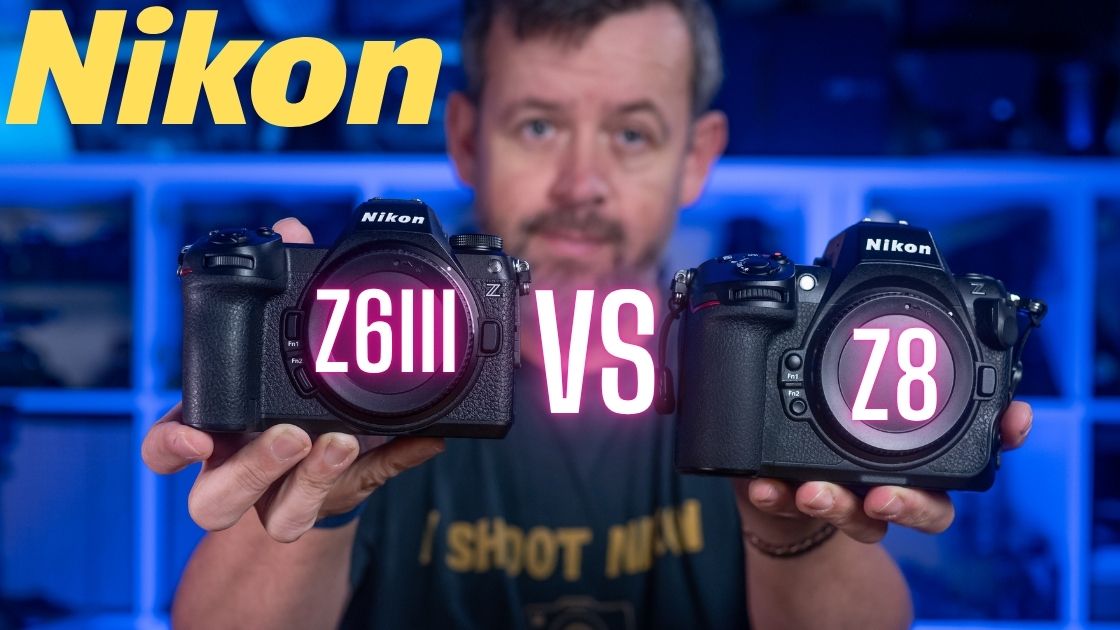
Nikon Z6 III vs Nikon Z8
My in-depth Nikon Z8 vs Z6iii review.
Welcome to my Nikon Z8 vs Z6iii review and which one is right for you? I personally own both of these cameras and I love them for very different reasons, so there is no hate here only facts and of course my own personal opinion.
You might very well be thinking that this is going to be very straight forward and the Nikon Z8 is the clear and obvious winner here but it’s not quiet that simple.. as both these cameras have their pros and cons.
They both have their specific uses and of course budgets too, so yes the Z8 is the better camera in most ways but you could also be buying too much camera for you and crazily the Z6iii is also better than the Z8 in a few different ways.
So come on let’s get into it and I will tell you all about these two great cameras.
The Nikon Z8 and the Z6iii are very similar in lots of ways as they are both Professional bodies, yes the Z6iii is also a pro body. They both have weather sealing, professional controls, advanced autofocus and both have the same Expeed 7 processor.. but that’s where the similarities kind of end as the sensors in these cameras are completely different, but before we get into that let’s have a look at their prices first.
Nikon Z8 vs Z6iii Price
Camera prices have to be one of the major deciding or limiting factors for most photographers, as your budget is going to heavily dictate which camera you can buy. There is a massive price difference between the Nikon Z8 vs Z6iii with the Z6iii being nearly half the price.
At the time of doing this review the Nikon Z8 costs between $3,500 to $4,000, depending on what sales were on at the time and Z6iii (review here) costs around $2,200 to $2,500 again depending on sales available at the time.
So the Z8 would obviously have to be clearly the better camera here for you to consider this massive price difference right? Of course the Z8 is a lot better in a several ways, but in all honesty the Z6iii has a few advantages also and not everyone needs a Z8, so hopefully this Z8 vs Z6iii article will help you decide on the right one for you.
If you want to check the latest prices and special offers I have links below and please note these are affiliate links so if you purchase via them I may get a slight commission but it doesn’t costs you anything, this helps support my website and Youtube videos where I have loads of useful Nikon content, including several videos about both of these cameras/ how to set them up and focus settings etc… So thanks a million for the support.
You can check the price of the Nikon Z6iii on Amazon worldwide here or on Adorama here.
You can check the price of the Nikon Z8 on Amazon worldwide here or on Adorama here.
Build Quality, EVF’s and Displays
Build Quality
Both these bodies are classed as Nikon Professional series bodies and they both have magnesium alloy and carbon composite bodies with pro grade weather sealing too of course. They both feel fairly rugged but the Z8 does feel more robust than the Z6iii, it just feels beefier and a bit more sturdy in the hand too.
So, from a build quality perspective the crown here goes to the Z8, in saying that though the Z6iii is also really well made.
Electronic Viewfinder (EVF)
- The Z6 III This is one of the big advantages of the Z6iii, its EVF display has 5.76 million dots, 120Hz refresh rate and it’s also super bright which all combines to give you incredible detail for a fantastic viewing experience.
- The Z8 uses a 3.69 million dot EVF, but it has Nikon’s blackout-free dual-stream technology, which is great when tracking fast moving subjects.
The winner here for me is a bit of a funny one as they both have their advantages, if it’s down to pure image quality it’s easily the Z6iii for the win but if you shoot a lot in burst mode at high fps the blackout free display on the Z8 is a big advantage there. In short if the Z8 had the Z6iii EVF I would see that as a serious upgrade.
Back Displays
- The Z6iii flip out screen then is something you are either going to love or hate.. personally this was something I was waiting for, for years and after a week of using it I wasn’t a fan but after a month or so I didn’t mind it at all and I do find it very useful at times. Let’s just say this screen is going to divide people. Some will love it others won’t.
- The Nikon Z8 has as articulating screen which can tilt and turn it’s easy to use with a cage or L bracket and it’s a far more traditional design. In short if you enjoyed all previous DSLR and pro series screens then this will be even better for you as you can also twist it to the right and left for an increased viewing angle.
Display Winner : If you shoot a lot of video the Z6iii display is super handy on rigs and for vlogging. If you are a stills shooter then the traditional Z8 style display might well suit you better. For me there is again no winner here as I value both options equally.
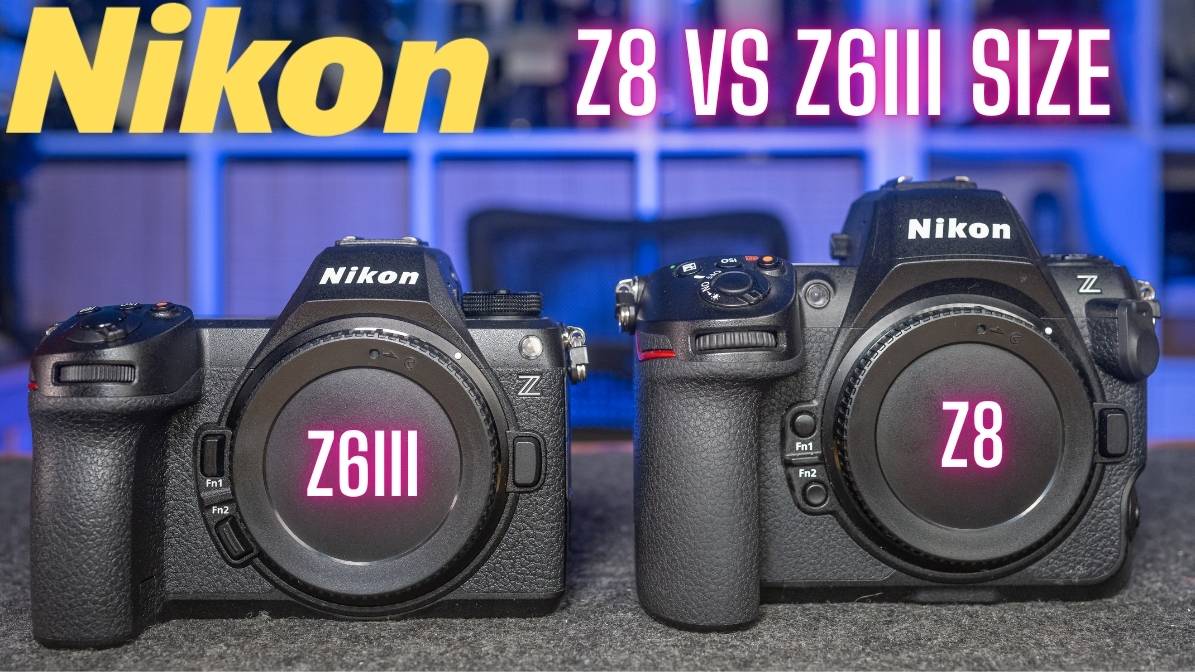
Nikon Z8 vs Z6iii Size and Weight.
Now of course there is a physical size difference between the two cameras with the Z8 clearly being the bigger and heavier model but thankfully the Z6iii is also slightly bigger than the Z6ii was. This means you get a nice grip on both these cameras making them a bit more comfortable to hold than the previous models.
Handholding both of these cameras with a long lens attached even on an 8 hour commercial shoot still feels good thankfully.. as they both have this kind of old world DSLR feel to them with the Z8 having the slight edge here. The grip is also tall enough on both cameras to fit all my fingers on the grip. Again the Z8 has a slightly taller grip here so your fingers don’t feel as crammed.
A point to note here though is if you travel a lot or use a gimbal the Z6iii is going to be a lot easier to work with.. due to its smaller size and weight of course so this could be a deciding factor for you.
Now speaking of weight the Z6iii weighs approx 760 grams whereas the Z8 weighs about 910 grams with a battery installed in both cameras, while it’s not a massive weight difference it does add up a lot when you are using a gimbal as you also have the added leverage involved then too.
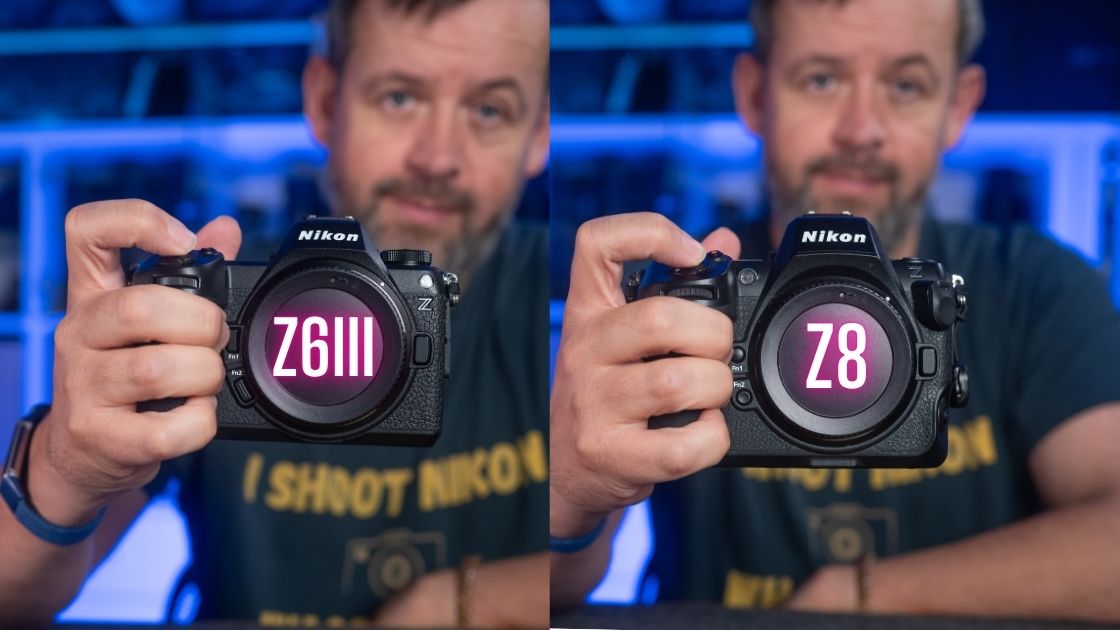
Nikon Z8 vs Z6iii Sensor Technology
- Nikon Z8 Stacked sensor: The imaging layer is stacked with on-chip memory. This allows the camera to read data extremely quickly with a sensor read time of 3.7ms, almost eliminating rolling shutter, enabling very high burst speeds and making 8K video possible.
- Nikon Z6iii Partially stacked sensor : This is a newer design and while it has a fast sensor read time of approx 14ms it’s not as fast as a fully stacked sensor but it’s much quicker readout times than older back-side illuminated sensors which were 50ms and slower. The partially stacked sensor helps keeps rolling shutter under control, it allows oversampled 4K60p video and all at a lower cost thankfully.
Resolution
- The Z8 has a 46 megapixel sensor, so it has to be the clear winner here as it gives you the option to crop heavily in post processing. This is incredibly handy for wildlife, sports and even those trips when you might not be able to bring a longer focal length lens with you. It also helps if you want to make massive prints too of course. Now the drawback of this is.. huge file sizes, so just be aware of that, this is going to cost you a lot on both card storage and file storage on your computer.
- The Z6 III has a 24 megapixel sensor so it’s a bit more modest, but it’s actually a sweet spot for many shooters: as it gives you smaller files making storage a lot easier and it also gives you slightly better noise handling in low light situations. For most of photographers 24mp is more than good enough.
The bottom line here is…
Stacked sensors are better for ultimate speed, wildlife, video and pro sports, while a partially stacked sensor gives you most of the benefits without the steep price tag.
Dynamic Range
Looking at dynamic range now and the Z8 has again a nice advantage here with 14.2 stops of dynamic range while the Z6iii is about one stop lower…. some of this is also due to the lower base ISO of 64 on the Z8 compared to ISO100 on the Z6iii.
Now in saying that this difference in Dynamic range does even out as you rise up to higher ISO’s like from ISO 800 onwards to such an extent that you wouldn’t actually notice it.
Dynamic range winner : So, if you do a lot of high-contrast extreme outdoor work or want every possible ounce of highlight and shadow retention, the Z8 is the stronger tool here. But for day to day normal shooting conditions they both work faultlessly and deliver excellent results.
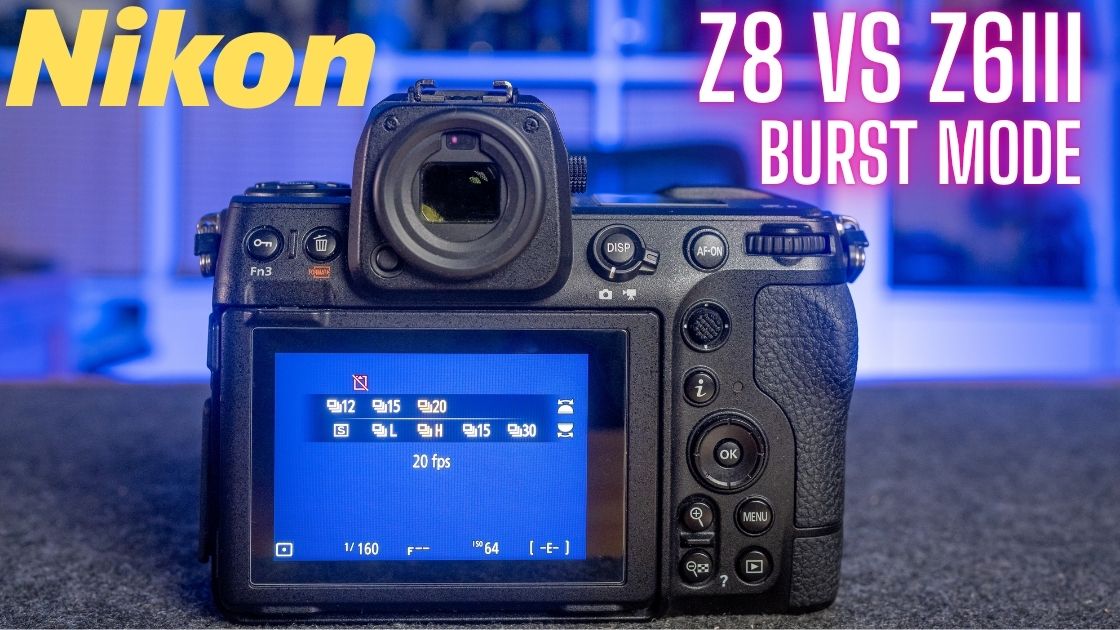
Burst Rates
- The Z6 III: Can shoot 14 frames per second in RAW with its mechanical shutter, it also offers JPEG burst modes of 30 in full resolution or 60 and even 120 frames per second at lower resolutions, 14 fps per second is generally good enough for most shooters, unless you are shooting wildlife or very fast moving sports.
- The Z8: Can shoot at 20 fps RAW, and can push 30 fps with full-res JPEG, or 60/120 fps in reduced resolution but it still delivers higher resolution images at those speeds than the Z6iii can manage. The buffer is deeper on the Z8 also, but keep in mind those 45MP RAW files are huge, so card speeds really matters more for the Z8.
- Both cameras also have prerelease capture.
The Takeaway from this is : For sheer speed tricks, the Z6 III does a very good job but the Z8 is truly unbeatable for maximum speed here. So if max fps in burst mode is your holy grail the Z8 has to be the one for you.
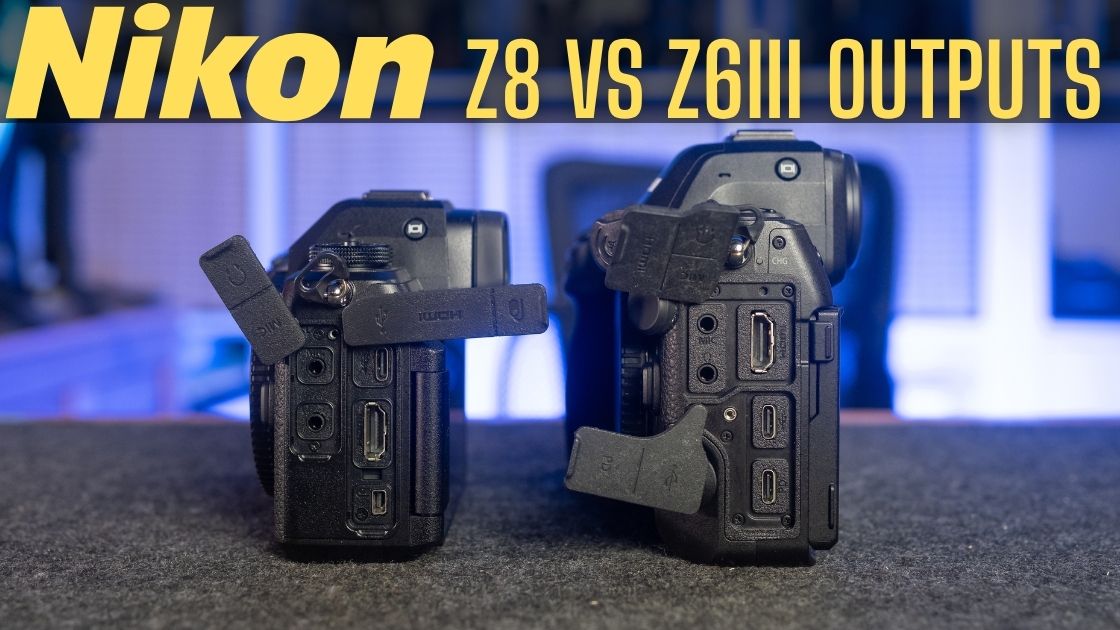
Autofocus
- Both cameras use Nikon’s latest EXPEED 7 processor with subject detection for people, animals, vehicles and more. You also get 3D tracking that sticks really well to moving subjects. Incidentally I have videos on how to setup both of these cameras for amazing autofocus results in the description below.
- For the Z8: Because of the stacked sensor, autofocus information is updated more quickly, so when subjects are moving extremely fast — like birds in flight or pro-level sports — you get a tiny but meaningful edge in focus speed or reliability with the Z8.
- Z6 III: Still excellent and a huge upgrade over the Z6 II. But the Z6iii’s partially stacked sensor does very slightly lag behind the Z8 but you really do need sort of extreme situations to notice it.
Autofocus winner : In most situations you won’t miss that stacked Auto Focus advantage, apart from wildlife and sports, the difference being very slight in my eyes and for most shooters I would say forget about it but if you really want the best focusing camera here the Z8 is the marginal winner.
Rolling Shutter (stills)
- Z8: With its stacked sensor, the Nikon Z8’s readout is extremely fast — around 3.7 milliseconds. That means electronic shutter (no mechanical shutter) is practically distortion-free.
- Z6 III: Rolling shutter in the Z6iii is only an issue when you use electronic shutter and even then it’s a big improvement over previous generations, with 14-15 milliseconds of a readout. That’s fast enough for most shoots, but if you pan very quickly or capture very fast-moving subjects, you may still see bending verticals in your results. Again with the mechanical shutter it’s no issue at all.
Rolling shutter winner : Again it’s the Z8 here with it’s faster readout times but remember rolling shutter is only an issue with the Z6iii when you use electronic shutter.
High ISO
- Z6 III: With its lower resolution of 24MP, each pixel is then larger and because there are fewer pixels there are fewer gaps between each pixel or pixel walls so you have more light absorbing surface area on the sensor. Then we have the higher base ISO on the Z6iii and both of these slight differences combined give us less per-pixel noise and the results look a bit cleaner in very dark conditions. That can be helpful for events or weddings where you’re pushing ISO 6400 and beyond.
- Z8: The noise is a little more visible per pixel, but once you downsize to the same output size, the difference is smaller, it’s still there though and the Z6iii has a slight advantage here. In saying that both cameras handle high ISO’s very well.
High ISO winner : For me it’s the Z6iii here as the results are just ever so slightly better but there isn’t an awful lot in it. They both perform well in lowlight conditions.
Colour
Both cameras share Nikon’s EXPEED 7 engine and picture profiles. The color is classic Nikon — natural skin tones, strong but not oversaturated greens and blues.
I suppose if you like Nikon’s look, as most people do then you’ll get that look from both of these cameras and for me there is nothing to choose between them here so it’s a draw.
In body Image Stabilisation (IBIS)
The Nikon Z8 has about 5.5 stops of IBIS and up until recently that was great but now the Z6iii has about 8 stops of IBIS which is incredible. That’s a really nice advantage for the Z6iii. So if you shoot handheld in lower light situations or with longer focal length lenses that’s a nice plus point for the Z6iii.
A point to note here is the Nikon ZF also has 8 stops of IBIS but unlike the ZF the Z6iii doesn’t have the sensor rattle the ZF has when the camera is powered off. You see when the ZF is powered off the sensor shakes or rattles inside the camera as it isn’t parked or held in place, the Z6ii doesn’t have this issue though.
Card slots
The Nikon Z8 and Z6iii both have dual card slots, with a UHS II SD card and a CF Expree type B (XQD compatible) card slot also. This is absolutely essential for professional use as it gives you redundancy incase one card fails.
You can of course select which card is going to be your primary and secondary card, I always advise having your CF Express type B card as your Primary card as it’s firstly faster and secondly they are generally more reliable also.
The addition of the CF Express card slot is vital for 6k and 8k NRAW video recording and for the fast burst speeds these cameras are capable of.
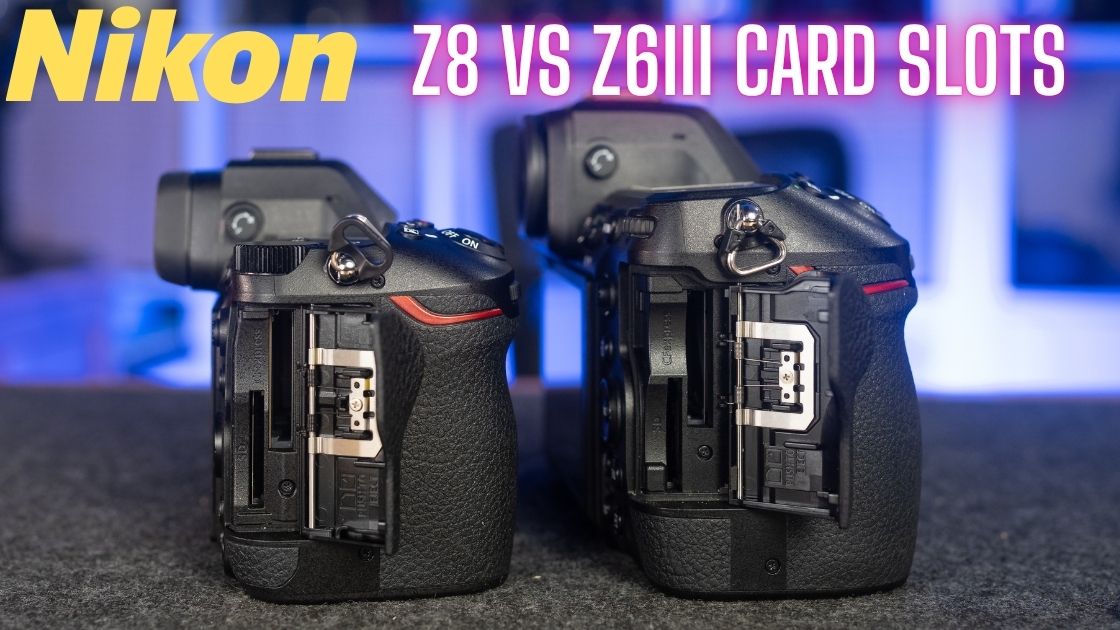
Videography and the Recording Formats
- The Z6 III: Records internally at up to 6K/60p in Nikon’s N-RAW, or ProRes RAW HQ at up to 6K/30p both of which are 12 bit. You also get ProRes 422 HQ and H.265 10-bit internal recording, plus Full HD up to 240 frames per second which is great for super slow motion.
- Z8: Pushes further with 8.3K/60p in N-RAW, plus ProRes RAW HQ again both in 12 bit and ProRes 422 HQ and H.265. It also offers fast frame rates but tops out at 4K/120p.
So, in a nutshell the Z8 has 8k raw where as the Z6iii only goes up to 6k Raw but the Z6iii can go up to 240 fps if you need super slow mo.
Dynamic Range for video
From what I am told the Nikon Z8 has approx 14 stops of dynamic range when using 12 bit Nlog raw recording whereas the Nikon Z6iii has apparently only about 10.5 stops of dynamic range again with 12 bit raw recording so the Z8 is the clear winner here if you needed that extra dynamic range.
Oversampling
- Z6 III: Full-frame oversampled 4K/60p from 6K readout.
- Z8: Can oversample 4K/60 from its 8K sensor (when you enable the option).
Translation: If your focus is super-clean 4K/60p, the Z8 and the Z6 III both do an amazing job here.
Rolling Shutter (video)
- Z8: With a stacked sensor and a readout of about 3.7 milliseconds rolling shutter is minimal so pans and movement stays clean and distortion free.
- Z6 III: has about a 9.5 milliseconds readout in video, which is already very good and competitive when stacked its direct rivals but it’s not as good as the Z8. When comparred to the 22ms read out times of older models like the Z6ii in 4k, the newer Z6iii is a big improvement here.
Rolling shutter winner : Again this one goes to the Nikon Z8, with its faster readout times it’s a lot better than the Z6iii, in saying that though unles you are shooting very fast scenes with very quick movement the Z6ii also does a really good job.
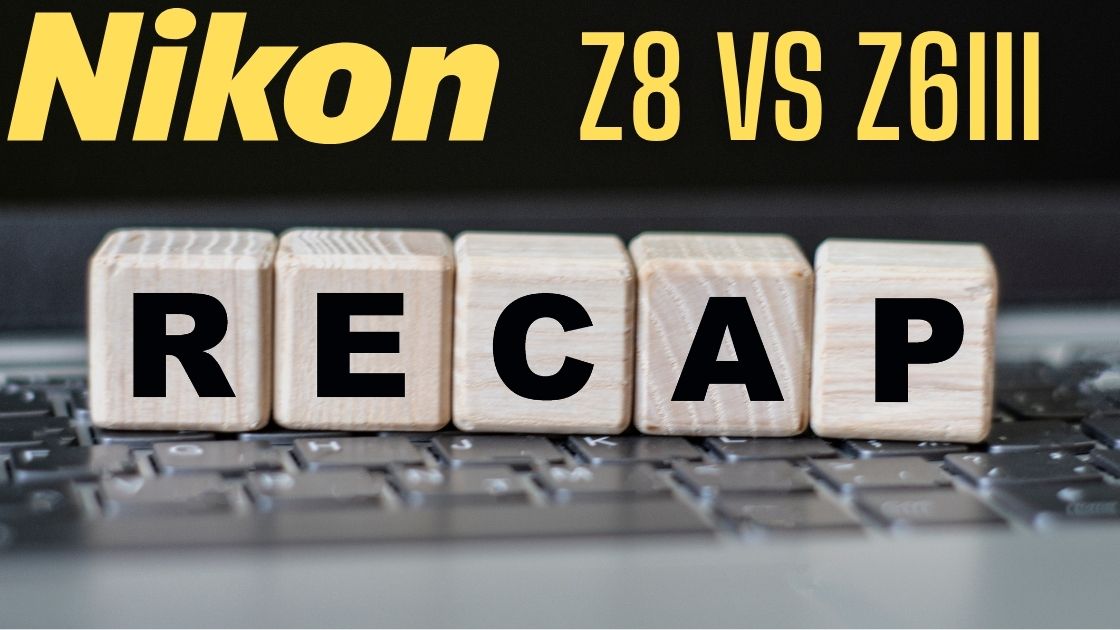
Main differences Nikon Z8 vs Z6iii
- Resolution: Z6 III = 24MP, Z8 = 45MP.
- Dynamic Range: Z8 wins at lower ISO’s.
- Burst: Z8 20 fps RAW, Z6iii 14fps RAW.
- IBIS the Nikon Z6III has 8 stops and the Nikon Z8 5.5 stops.
- Sensor Tech: Partially stacked vs stacked so it’s down to speed and the Z8 is the winner here with everything to do with speed but the Z6iii partially stacked sensor is a lot cheaper so the Z6iii wins on price then.
- Video: Both provide clean and detailed oversampled 4K/60p from their 6k/8k readouts but the Z6iii offers Full HD at 240 fps, the Z6iii is also Lighter for gimbal use. If you need 8k though then it has to be the Z8, 6k on the Z6iii is also amazing though.
- Build: Both rugged and weather sealed, Z8 has the slight edge here in build quality and rugged feel but the weather sealing is the same.
- EVF: Z6 III clearly sharper and brighter.
Back display : I will say no comment on that one they both have their pros and cons.
Which One Should You Buy?
- Choose the Z8 if you need maximum resolution for huge prints or for cropping, or if you need serious landscape type dynamic range performance or near-perfect electronic shutter for sports. If 8K video or pro wildlife shooting is in your workflow then you need the Z8, it’s as simple as that.
- Choose the Z6 III if you want the best value hybrid camera with smaller files, oversampled 4K/60p that looks fantastic, 6K options so you can crop in post and still produce awesome full resolution 4k footage, a lighter body, still excellent autofocus and relatively high speed burst options. 8 stops of VR and a fractionally better low light performance. Overall the Z6iii is an outrageously good Hybrid camera for the price.
So the real difference isn’t about color or ‘image quality magic’ — it’s about speed and sensor readout. The Z8 is a kind of flagship for a reason and it wins on resolution and speed here clearly. The Z6 III delivers incredible value, especially if you’re focused on 4K video and hybrid shooting.
I suppose there is no easy answer to this but I hope I explained it in enough detail without it being too much and it helped you find the one that’s right for you.
You can check the price of the Nikon Z6iii on Amazon worldwide here or on Adorama here.
You can check the price of the Nikon Z8 on Amazon worldwide here or on Adorama here.
You can check out my full Nikon Z8 review here or My full Nikon Z6iii review here.
Or my full Nikon ZF review here.
My Nikon Z 180-600mm lens review here.
If you had to choose one, which way would you go for that’s my question for you?
Or could you not decide just like me and stupidly buy both of them 🙂
So, ya, thanks again for watching and see you out there,
Kieran.
Frequently Asked Questions
Nikon Z8
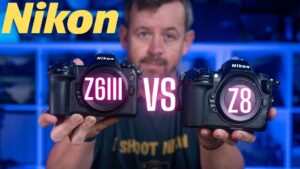
The Nikon Z8 is a 45.7-megapixel stacked-sensor mirrorless camera offering lightning-fast readout, powerful 8K video capabilities, and advanced subject-tracking autofocus. It brings flagship Z9 performance to a smaller body.
4.9
Pros
- Amazing Auto Focus
- 8K60 RAW internal recording
- Blackout free EVF
- Burst mode of 20fps in RAW
- Fantastic colours and image quality.
Cons
- Expensive
- Cards can overheat at times.
- No video recording backup or redundancy facility
- No external SSD recording option.
Nikon Z6iii

The Nikon Z6 III is a 24.5-megapixel full-frame mirrorless camera featuring a partially stacked sensor, advanced autofocus, and oversampled 4K/60p video recording. It’s built for hybrid creators who want speed, portability, and exceptional image quality.
4.8
Pros
- Stunning colours
- Fantastic Auto Focus
- 6K60P RAW internal recording
- Amazing 5.76MP EVF
- 8 stops of IBIS
- Great price
Cons
- Dynamic range suffers slightly due to partially stacked sensor
- Slight blackout in burst modes
- No recording to external SSD.